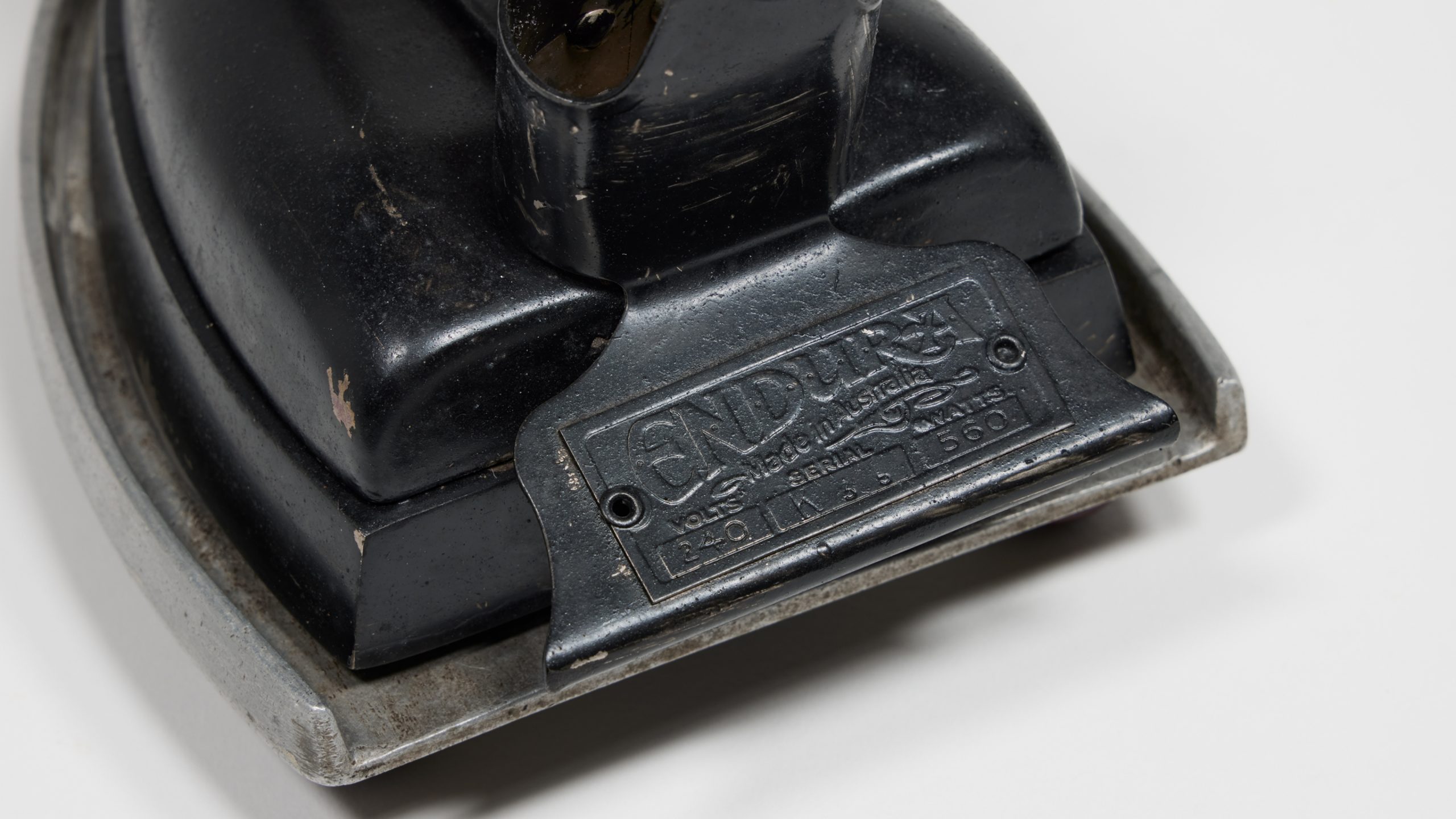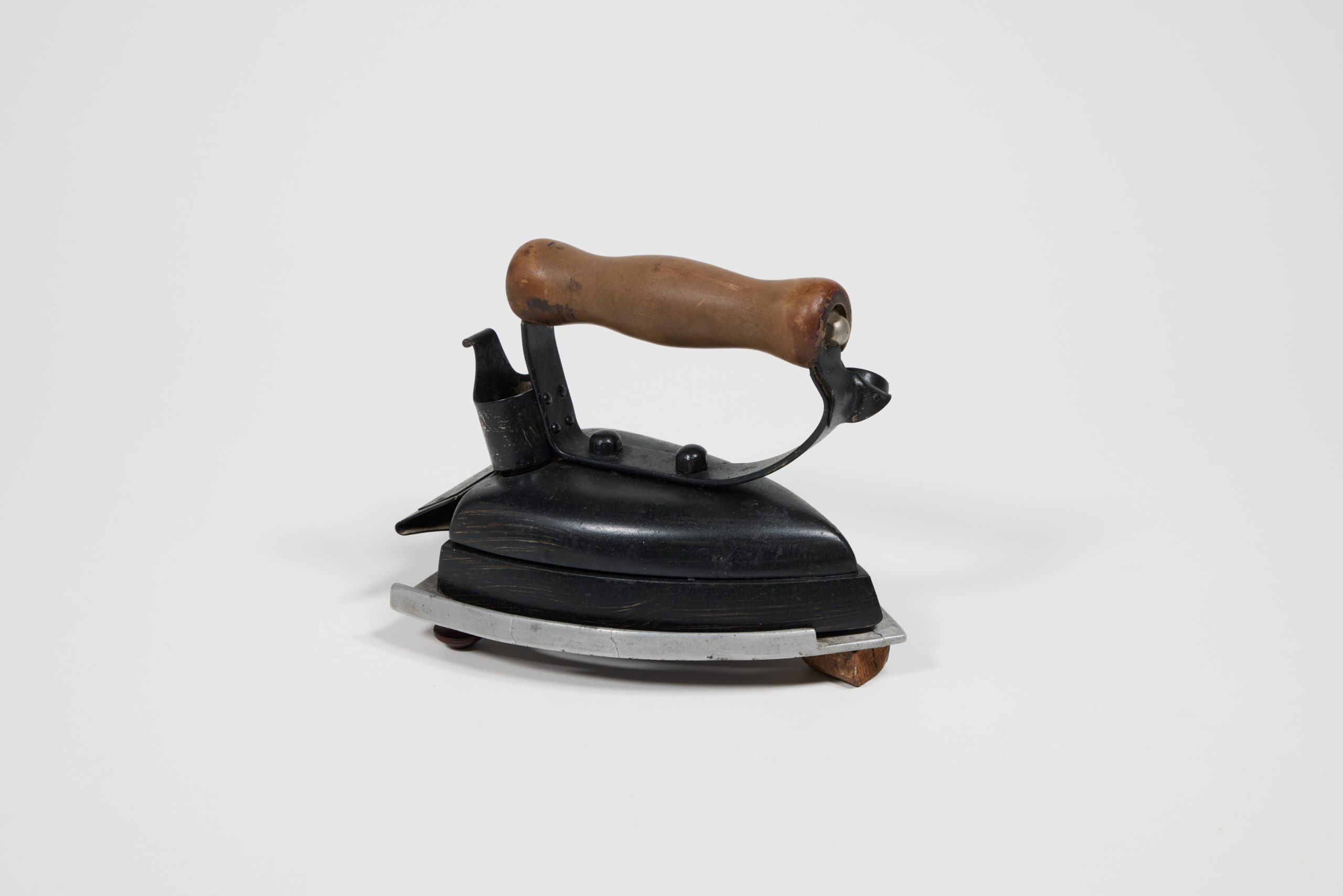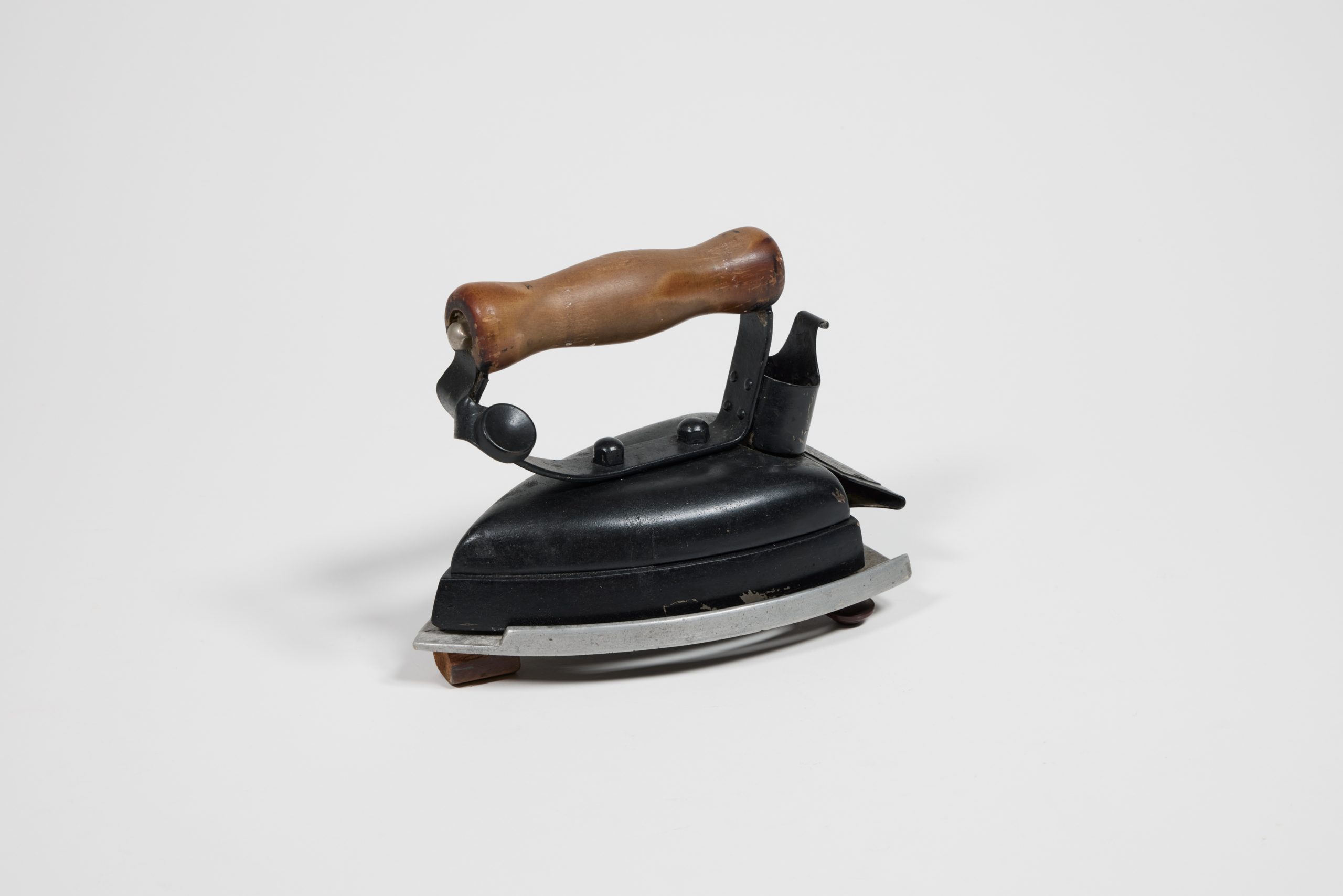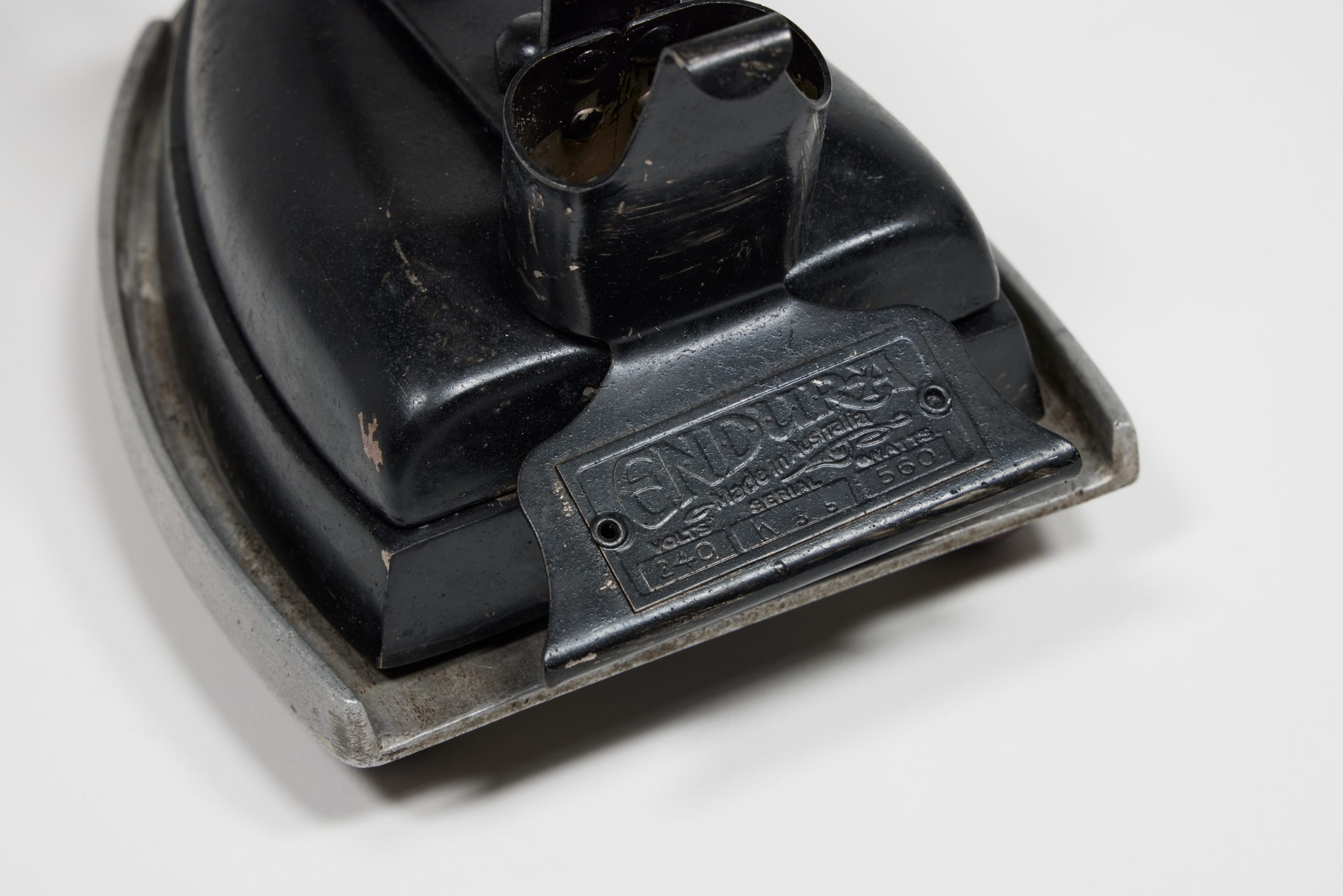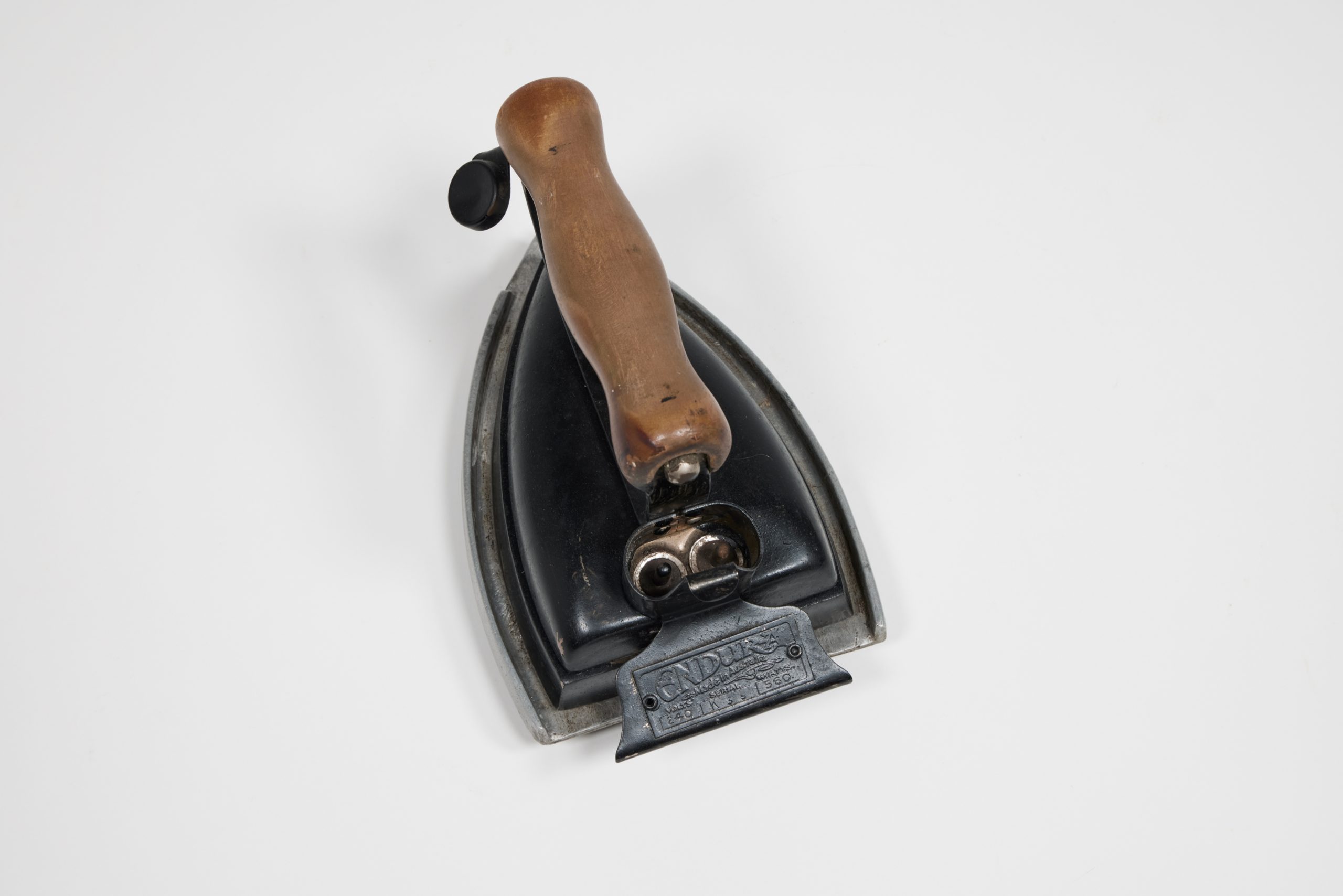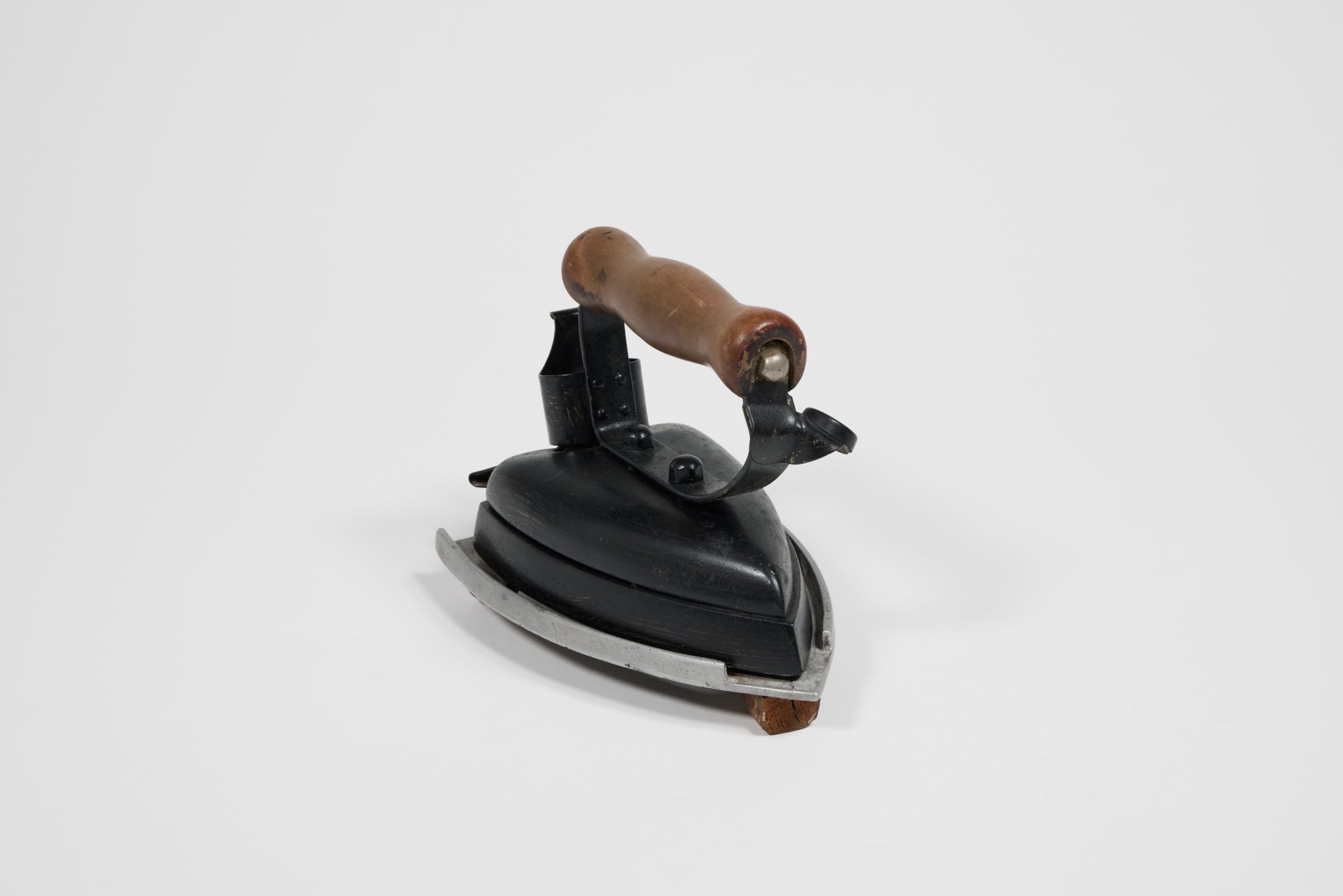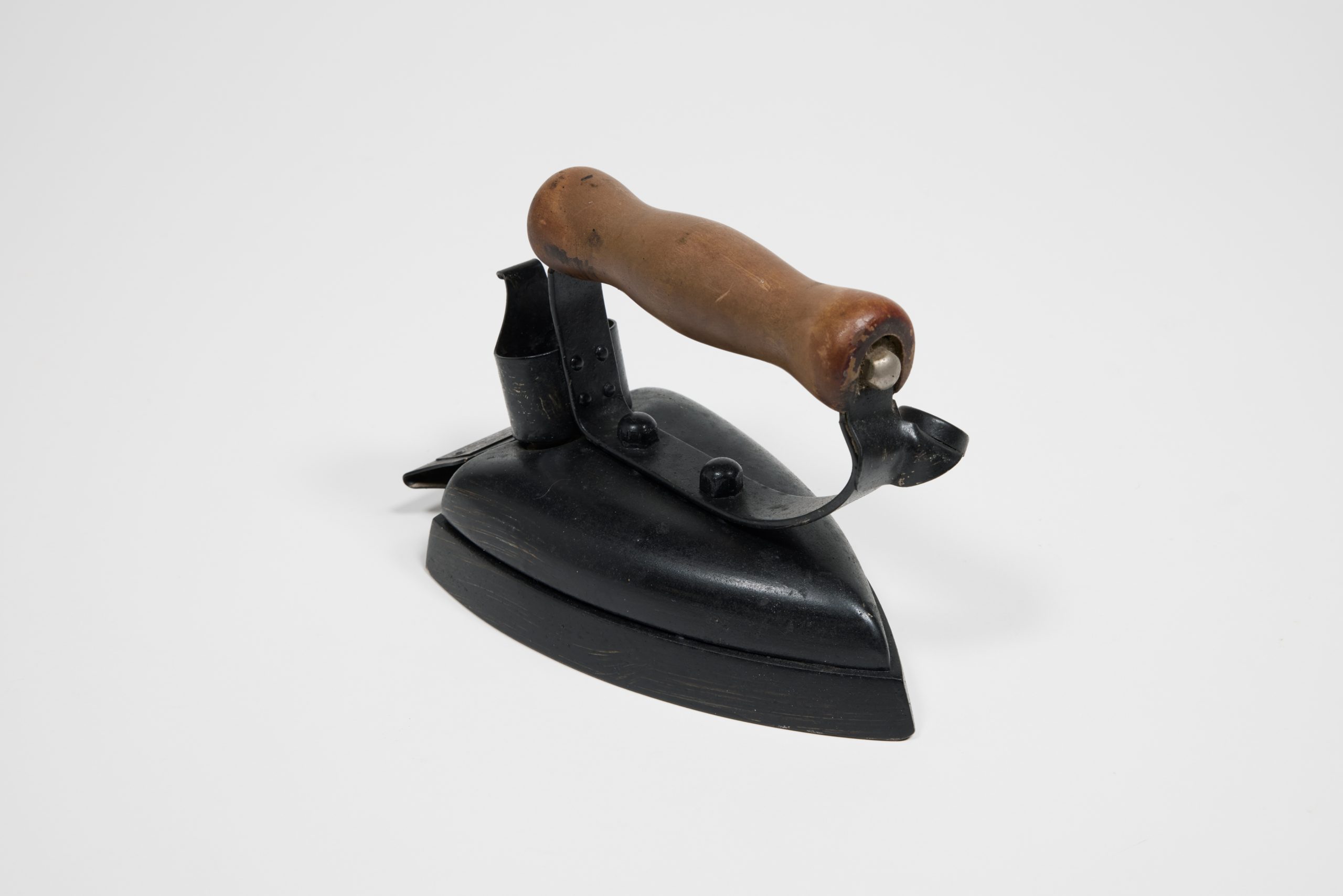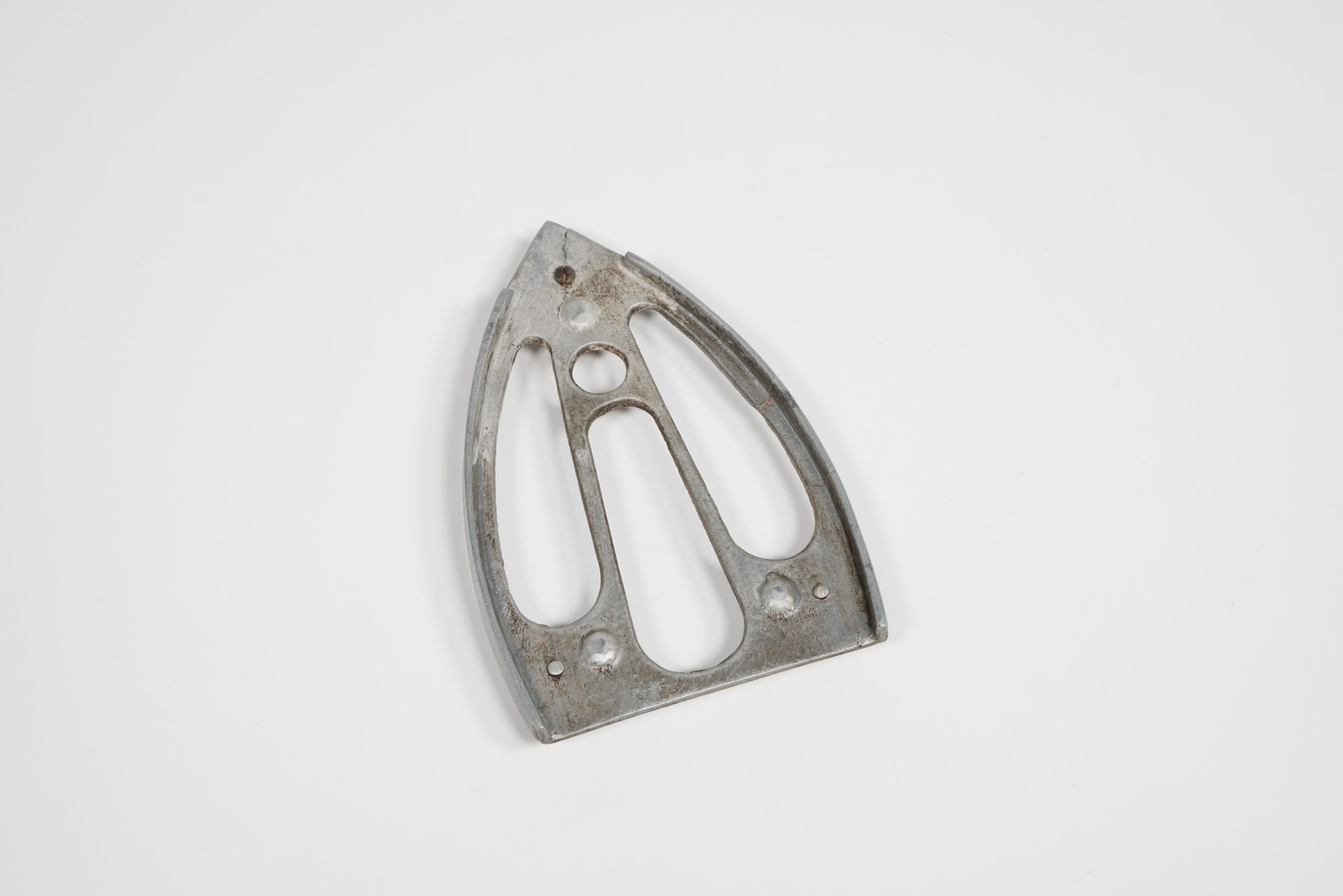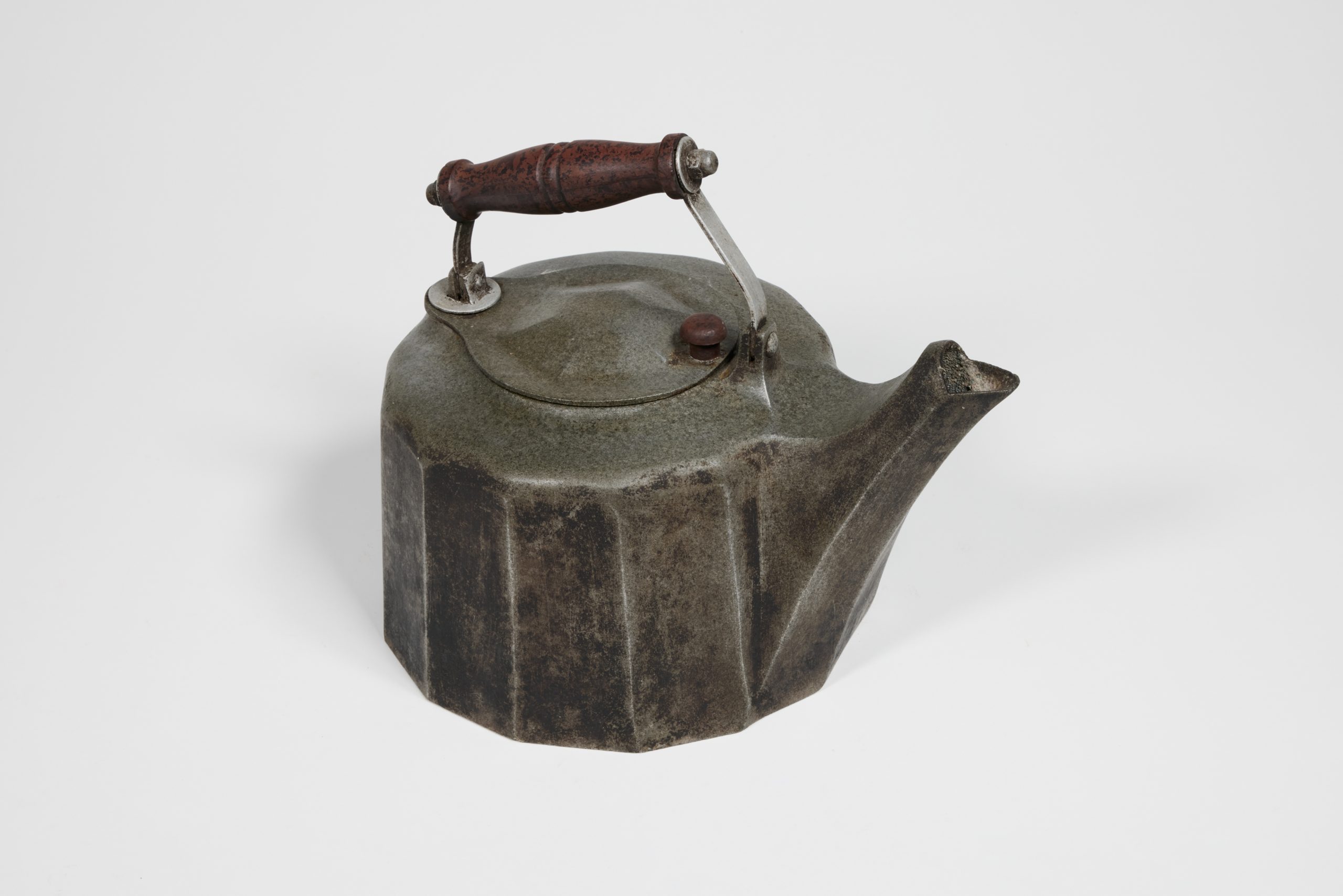No More Fire
The Blessed Relief of Steady Heat
Before the 20th century, ironing was hot, exhausting and dangerous, and therefore a dreaded chore. As with other housework ironing was usually done by women, whether by maids or by wives or daughters of a household. During laundering, a proper mangle was sometimes used to partially smooth and flatten items to reduce the need for ironing. But there was no getting around ironing day.
In her Book of Household Management (1861), Mrs Beeton notes that ‘to be able to iron properly requires much practice and experience.’ Flat irons or sad irons were made from solid iron and had to be heated on a stove or fire. Once hot, an iron would cool off quickly while it was being used so the ironer usually used three irons in a rotating process, to ensure one was always ready to use. Women used a cloth or fabric pad to grasp the metal handle because it would be nearly as hot as the ironing plate. Box irons had a hollow chamber in which hot coal or heated ceramic pieces were inserted. Burns and scalds from ironing were very common and the weight of the irons made the work tiring. Another difficulty was that irons had to be kept spotlessly clean throughout the ironing process, otherwise soot from the stove could be transferred on to the freshly cleaned clothes or linens. An overly hot iron could also scorch brown marks into textiles.
The advent of electrical irons, like the one pictured, must have seemed a blessed relief to maids and housewives. The first electric irons debuted in the 1880s but were not widely adopted partly because few Australian households had electricity. American ‘Hotpoint’ electric irons, first sold in Australia around 1914, were a popular product for decades. From the late 1920s, they were manufactured in Australia by the Australian General Electric Company. Early electric irons lacked a thermostat to maintain a steady temperature. Rapid improvements were made from the 1930s to 1950s including the introduction of steam technology.
The ‘Endura’ model electric iron pictured probably dates from the 1930-40s. The triangular tail piece at one end was a resting support but it may not have been needed thanks to the accompanying trivet. The small circular concave element attached to the front of the handle was a thumb rest which allowed the ironer to press down firmly. The day this iron was purchased and brought home was surely a happy event for the ironer of the household.


